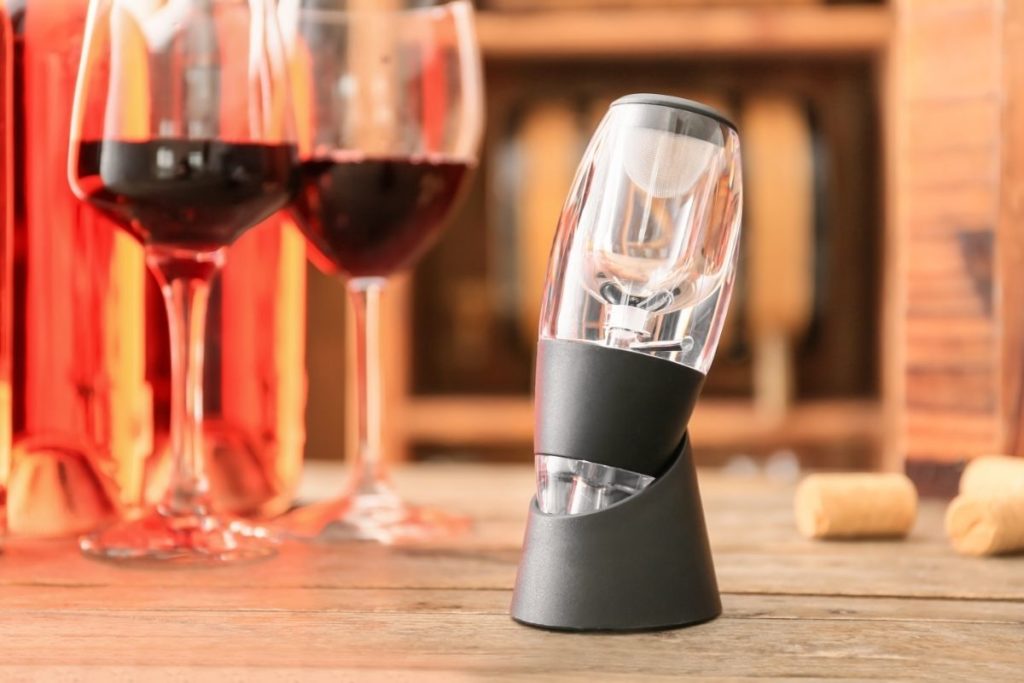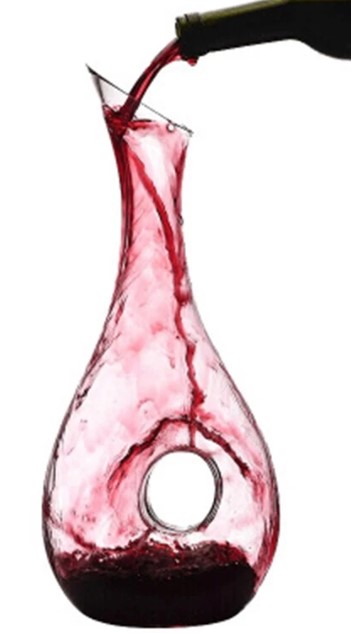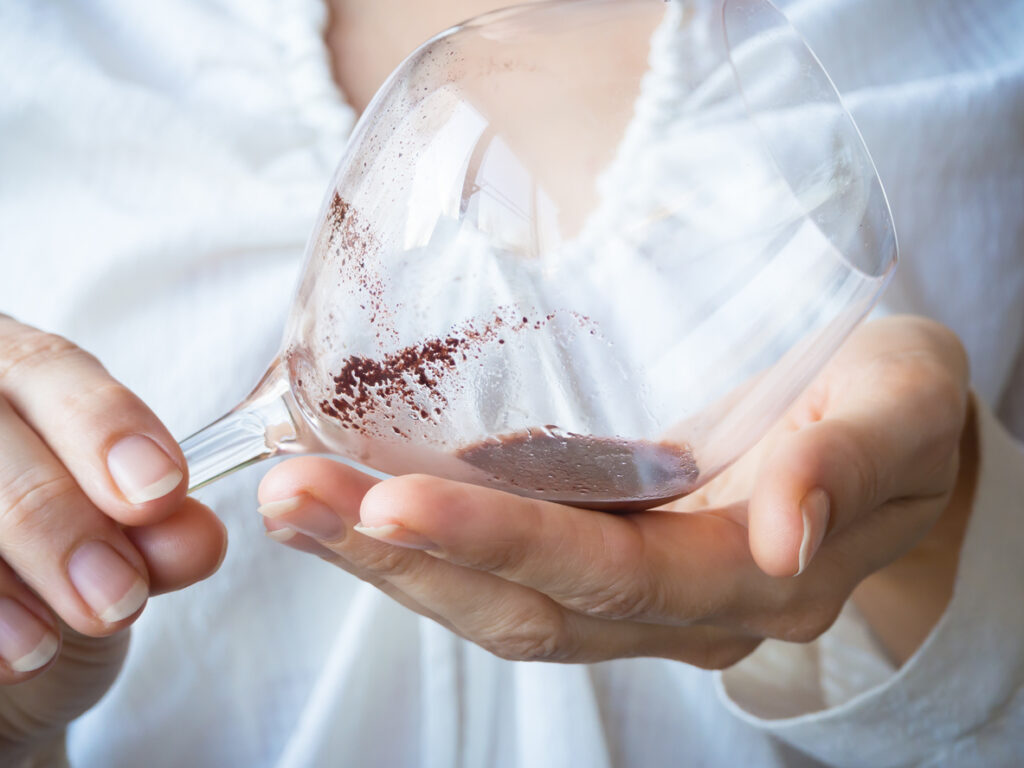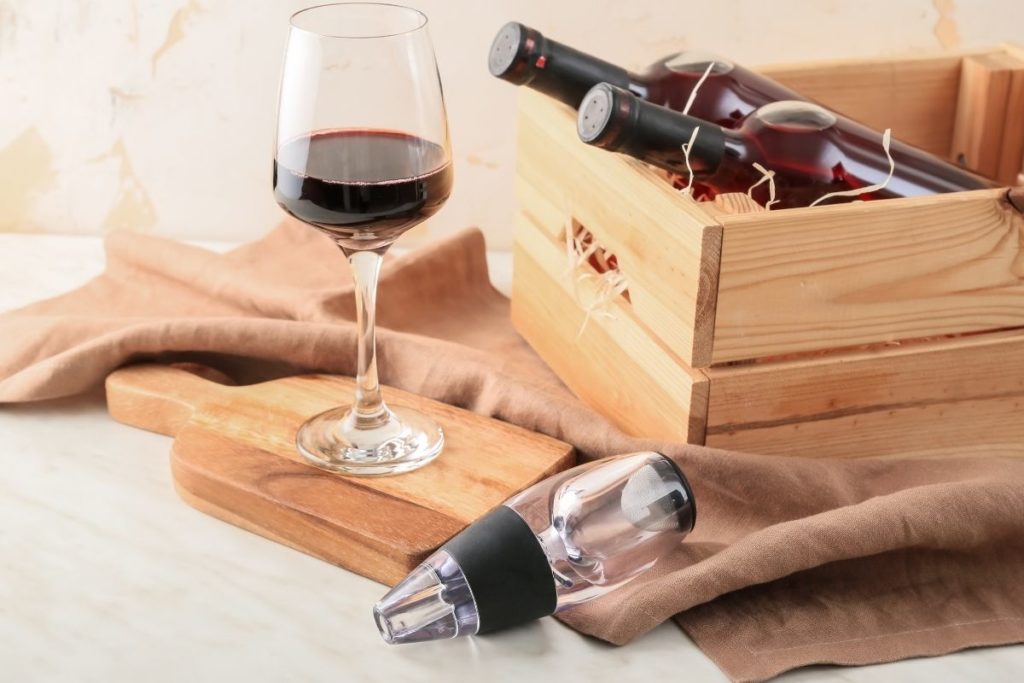A wine aerator improves the wine-drinking experience by releasing its full flavor potential, softening those heavy tannins, and opening up all of white wines to the fruity, floral, or otherwise aromatic notes that sommeliers are often talking about.
Key takeaways
- Wine aeration is crucial for improving taste and bouquet.
- Aerators offer rapid aeration while decanters provide a gentler, slower aeration.
- Choosing between an aerator and decanter depends on the wine and personal preference.
What is a Wine Aerator?
Designed to – as the name suggests – introduce your wine to more air than it normally comes into contact with just by being opened, poured, and allowed to breathe, this minimizes the unwanted tastes and flavors that certain wines can have, as well as minimizes your chance of a possible hangover.

The science behind aeration – What does a wine aerator do?
Essentially, by forcing wine through a pressurized oxygen tunnel, an aerator can speed wine tasting experience and up the processes of oxidation and evaporation, causing a chemical reaction to take place.
This is a similar reaction to the one that occurs when fruit becomes ripened as it is left in your bowl or refrigerator. Perhaps the most important compound to be transformed is ethanol – yes, the alcoholic component of your wine.
Oxidation can enhance the wine’s flavor profile, making it more palatable. Meanwhile, certain compounds, such as sulfides, which can emit unpleasant odors, are reduced during aeration.

This has the effect of softening tannins and releasing the natural bouquet of the wine.
- Oxidation: Improves the wine’s flavors and reduces the harshness of tannins.
- Evaporation: Unwanted compounds dissipate, refining the wine’s aroma.
Some remains as is, of course, but part of that ethanol content will be converted to acetic acid and/or acetaldehyde – this changes the wine taste flavor significantly, actively minimizing the medicinal-tasting characteristics.
Wine evaporation
Evaporation is also important became it accelerates the removal of sulfites, one of the unstable compounds that wine contains, artificially added in order to keep bacteria at bay and stop overoxidation during the winemaking procedure.
Although these are of course necessary to keep your wine safe and drinkable before it gets to you and the top is removed, any extra molecules floating around in your glass don’t need to be there and will negatively aerate wine and impact the flavor.

If you’ve found that previously wine tastes revolting and you’re not sure what all of the fans are going on about, this could be your way into becoming more acquainted with the grape-based beverage. What have you got to lose? They’re pretty cheap bottles to pick up, and if it doesn’t work for you, you could always pass it on as a gift.
How do you use a wine aerator?
Well, that depends! There are several different aerators available on the market, from separate carafes and decanters to physical aerating devices that attach directly to your wine bottle.
Handheld Wine Aerator
With ahandheld aerator,you’re first going to want to clip the filter on top, so no cork fragments or other sediments can make their way into the aerator – or your glass.
If yours doesn’t come with a filter, it’s possible there it`s an integrated one internally… or you might just need to get a better one.
Once fixed into place, prepare your first glass vessel for pouring and make sure it’s positioned properly on a flat service, as you may only have one hand free.
Holding the drink aerator directly above the glass, without covering any air holes, pour your wine through slowly.

Wine Aerators Elevate a Wine’s Flavor Profile
Never let the aerator’s chamber be more than half full at any one time, as this will prevent the proper aeration process from being carried out.
For a pouring aerator, which affixes to the wine bottle itself, you’re going to carefully place it in the opening once you’ve uncorked it or removed the lid – look for the end with a rubber nozzle surrounded by rings, as this is the bottom of the aerator.
Once in place, you’re ready to pour – remember, take your time and be careful, as the wine may come out faster or slower depending on the device.
How to Use Wine Aerators
Some pourers need you to tilt the bottle until it is completely upside down in order to successfully decant the wine, whereas others allow you to pour the wine world down as normal.
If you’re struggling to get any liquid out for tasting wine whilst the aerator is attached, keep tilting the bottle until it begins flowing. If you’re lucky, your pourer might feature an inbuilt stopper with a twisting top, so that you can lock it into place and store any leftover wine for next time.
Those fancy enough to have an automated aerator will need to assemble it according to the instructions – this typically involves adding some fresh batteries and then installing the aeration tube (which looks kind of like a drinking straw) so that it is attached to the aerator head, from which the aerating wine flows.

Then attach it to your bottle of wine as directed – it will usually have a spout to pour your wine from, which allows you to dispense a fresh wine glass at the touch of a button.
Simply hold your glass beneath the surface area with it at an angle and get ready to enjoy! Be sure to remove, dismantle and clean your aerator when you’re done, so that it’s ready for next time.
Whilst the above guides are as accurate as possible, it’s important to remember that each individual aerator works differently – it’s worthwhile to check the manufacturer’s guidelines for your specific product to make sure you’re using it correctly.
What is the difference between an aerator and a decanter for drinking red wine?
Different methods are utilized to aerate wine, each with its own application.
Wine Aerator:
A device that wine is poured through, which exposes it to air rapidly.
- Benefits: Instant aeration right before serving.
- Use Cases: Suitable for younger, bolder wines.
Wine Decanter
A container into which wine is poured and left to sit, allowing for gradual aeration.
- Benefits: Controlled aeration over a longer period.
- Use Cases: Ideal for older, more delicate wines that could deteriorate if aerated too quickly.
Comparing Wine Aerators and Decanters
Wine aerators and decanters serve different purposes in enhancing a wine’s aroma and taste. The following subsections detail their unique characteristics and how they affect wine quality.
Wine Aerator Characteristics
A wine aerator is a tool that exposes wine to air quickly. It is designed to:
- Speed up oxidation: Reduces the time needed for wine to breathe.
- Ease of use: Typically small and directly attached to the bottle.
Wine Decanter Features
A decanter, often made of glass or crystal, has a larger surface area and is used to:
- Separately store wine: Allows sediment to settle, improving clarity and flavor.
- Aesthetic appeal: Often serves as a decorative element due to its varied designs.
What are the benefits of wine aerating?
So you know how a wine aerator works and how to use one – now you might be wondering… what exactly is in it for me? It might sound like a lot of effort for nothing, but there are several reasons that aerating your wine before drinking could be very much worth your while.
First things first, to save you some money! Instead of spending extra cash on a fancier bottle of wine, get one you can afford, then aerate it!
You’ll transform and elevate what was once a “cheap” bottle of red or white into a far more complex flavor experience, impressing your dinner guests on a budget (or just giving yourself a nice weeknight treat!)

Do Wine Aerators Work?
The next best thing about aerating your wine is the alteration of its bouquet: before we taste something, we smell it, and by removing ethanol and sulfites from the picture, you’re reducing the harsh, chemically, medicine-like qualities that some wines can have.
As the aromas a result, the wine should not only smell but taste better, thus changing the flavor profileoverall and making it more palatable, even for those who aren’t necessarily wine drinkers at the average dinner party or social gathering.
It is also believed by some that using a wine aerator reduces your hangover the next day, but there’s not very much scientific evidence to back up this claim. If you want to give it a try for that reason though, there’s nothing stopping you!
The best wine aerator !
If you`re looking for a wine aerator which can perfectly aerate your wine, Aveine recently developped a wine aerator which is combined with an app. You just have to open your bottle of wine, put the aerator on top of the bottle, connect it to the Aveine app, take a picture of the label with vintage. Once the label was recognised you can pour your wine and will instantly have the perfect result using the Aveine micro oxygenation technology.

The Aveine Smart Wine Aerator exists in 2 versions. A simpler one which can replicate an aeration process of 12 hours (250 USD) and a more complex one wich can replicate an aeration process of 24 hours (450 USD). The wine you`ve poured will be aerated the rest of the bottle stays intact. You can also serve the same wine with different wine aeration and levels.
Frequently Asked Questions on Wine Aerators
In this section, specific questions about the functionalities and benefits of wine aerators and wine decanters are addressed, providing concise information to assist in the selection of the appropriate wine accessory.
What are the differences between aerating wine and decanting wine?
Aerating wine involves exposing it to air to enhance its flavor and aroma, while decanting wine not only aerates but also removes sediment that may have formed over time.
What are the advantages of using a wine aerator over a wine decanter?
A wine aerator is typically more convenient for immediate aeration and is better suited for wines that may not have significant sediment. They tend to be smaller, which makes them easier to handle and quicker to use than decanters.
How does the size of a wine aerator compare to that of a wine decanter?
Wine aerators are generally smaller and more compact than wine decanters. Aerators can be handheld devices or small attachments to the wine bottle, while decanters usually have a larger volume to accommodate a full bottle of wine.
Can a wine aerator replace a traditional decanter?
A wine aerator can replace a traditional decanter when the primary need is rapid aeration without the necessity of sediment removal. Some wines, especially older ones with more sediment, may still require decanting.
What are the key factors to consider when choosing the best wine aerator or decanter?
When choosing between a wine aerator and decanter, one should consider the type of wine being served, the presence of sediment, the importance of tradition in the serving process, and the preferred speed of aeration.
How do wine aerator decanter hybrids differ from standalone aerators and decanters?
Wine aerator decanter hybrids combine the quick aeration properties of an aerator with the sediment removal and serving elegance of a decanter.
They offer a convenient solution for serving wine that is both aerated and free of sediment.
Do You Aerate White Wine?
While it is commonly believed that only red wines benefit from aeration, there are some white wines that can also benefit from this process. For example, Chardonnay, Viognier, and Sauvignon Blanc can all benefit from a bit of air exposure to help open up their flavors and aromas.
It is important to note that not all white wines need to be aerated – delicate or light-bodied whites like Pinot Grigio or Riesling may not benefit as much from aeration and could actually lose their freshness if exposed to too much oxygen.

